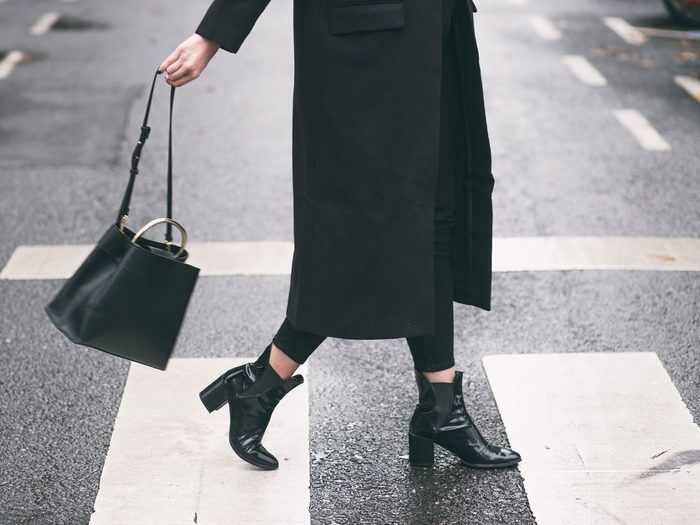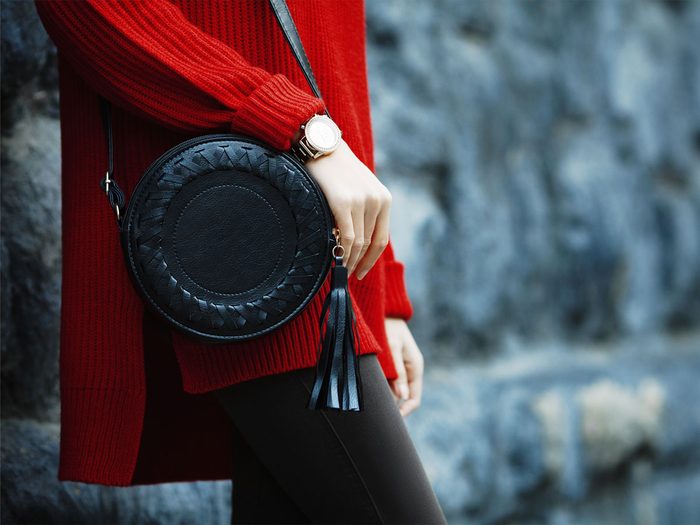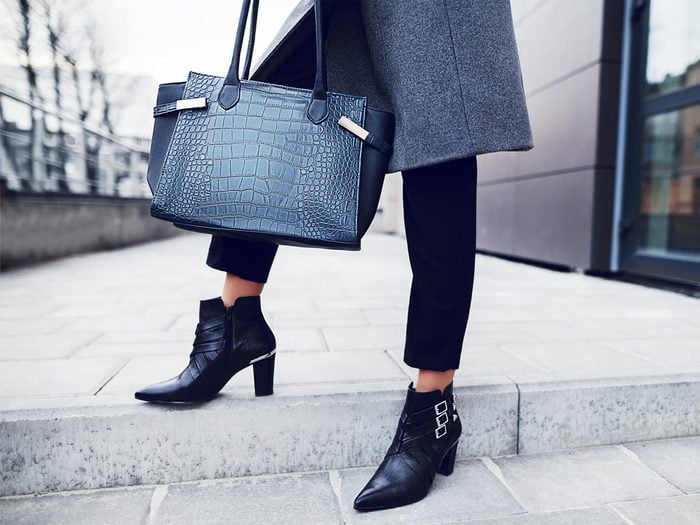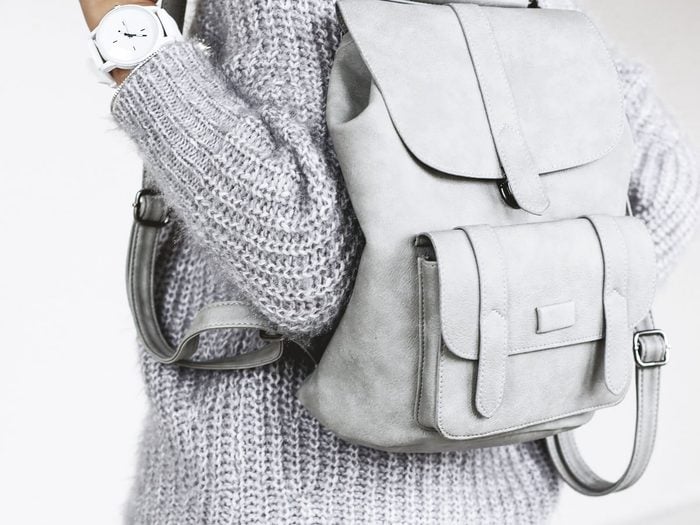
The Top-Handle
A healthy relationship with this type of bag comes down to how you interact with it. Sign off on carrying a top-handle bag (Shop our fave fall picks!) in one hand — as long as you’re alternating limbs and it’s not too heavy, says Dr. Debbie Wright, owner of Bayview Chiropractic in Courtenay, B.C., and second vice-chair with the Canadian Chiropractic Association Board.
Prone to draping a bag over a forearm or nestling it in the crook of an elbow? Mayday! That qualifies as direct pressure that enters the danger zone. “You can actually get physical nerve impingement if you’re doing that for a really long period of time, or the bag hits your arm in the right way,” she says, “You’re holding the entire weight of your purse up with the small muscles of your arm, which aren’t necessarily designed to lift that amount for that long. You run the risk of overusing and fatiguing the forearm and bicep; muscles that aren’t designed for constant contractions,” she says. Use awareness to play it safe: pack light and rotate sides if you’re standing for prolonged intervals. “Some minor modifications can get you through the day without any issues,” she says.
Here are 15 light jackets to help your transition from summer to fall.

The Cross-Body
Ergonomically, this bag is on the right track. “The diagonal distribution of weight is way better for the body,” says Dr. Wright. Wider straps also make a difference, and a truly winning design is highly customizable. “Find something that has a long enough strap to fit across the body but also gives you the option to be carried by hand,” she says. “You want to keep moving, you don’t want to be in one posture for too long without changing it up. That’s really where a lot of our problems come from.” (For better posture, try this these simple exercises.)
To counterbalance daily strains, Dr. Wright encourages spending a few minutes completing simple, gentle stretches — a task easily accomplished with the free Straighten Up Canada app. Her favourite moves, the Bending Star and Twisting Star, help rotate the back and realign the shoulders. “You’re moving into positions you wouldn’t normally if you’re walking around carrying a purse,” she says. “They’ll get you out of a slouchy mode and activate muscles; and help reverse some of the postures we spend most of our days in.”
And don’t forget to shop our fall picks for cross-body bags.

The Tote
Loaded up and slung over one shoulder, it’s easy to see how a tote bag can do your body a disservice. Size matters when it comes to finding one that’ll be kind. (Check out four styles we love.) “The smaller, the better, because you’re going to put less stuff in it,” says Dr. Wright. Taking a cue from adult backpack guidelines, carrying a bag that’s 10 percent of your body weight is ideal. Wider straps (better at dispersing weight) are an important detail, as is a comfortable fit between bag and body. “You want to make sure it’s the right length to hit you at the part of your body where you can tuck it away,” she says, “but you really want to try and switch shoulders periodically — every block or two, or every ten minutes. I tell patients the next posture is the best posture. The more that you can switch it up — and change the stresses on your body — the better it is going to be able to adapt,” says Dr. Wright. Check out these 7 posture tips for when you’re walking.

The Backpack
Get ready to say ahhh. “Backpacks are the best way to carry things because they’re set up in a way that’s more ergonomically happy for your body,” says Dr. Wright. “If you use one properly you’re going to distribute weight over your entire torso, and really decrease stress on the neck, shoulders and back,” she says. (Still struggling with back pain? Here’s how to tell which type you’re suffering from.) Wide, padded straps yield maximum comfort, and adjustable ones earn top marks, too. “You want it positioned in the small of your back. A close fit is going to be better for posture and to walk with to decrease the chances of having any sort of pain or problem,” she says. “Get the central amount of weight not so low that it’s pulling you back, and not too high. If you’re carrying something really heavy, place that closest to your back so you’re putting weight closer to your centre of gravity.” Shop our fall backpack picks here.
